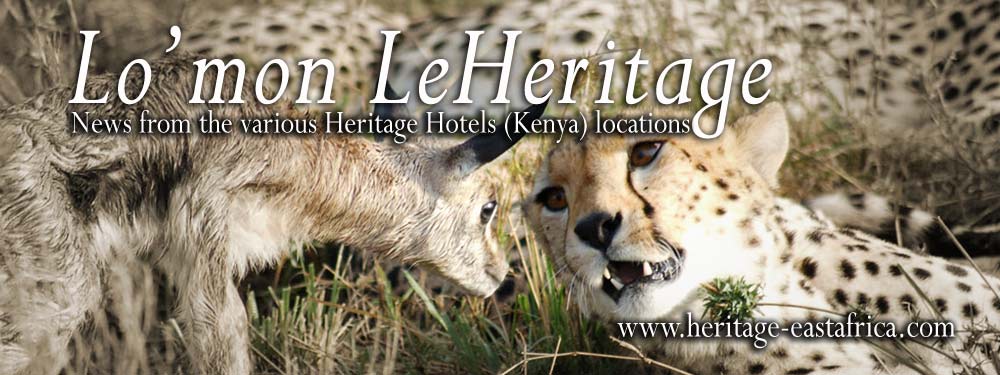The weather’s great with
clear mornings, cool afternoons and clear sunsets. Temperatures vary between 16ºC and 27ºC.
The annual migration of the
wildebeest and zebra has begun – both for the resident from the Loita plains
and those coming in from the Serengeti.
The Serengeti-Mara migration
is at Sand River approaching the Mara reserve. The herds can be seen south of
Mara Intrepids Camp by the Mara Bridge. They
are moving faster than usual. This could be due to the fresh grass sprouting
after the rains a few days ago.
The resident wildebeest and
zebra are at Topi Plain between Olare Orok and Rhino Ridge. There are also big
herds of topis, gazelles and hartebeests.
PREDATORS SIGHTINGS
The
predators are having a good time now for there is plenty of food i.e. prey.
LIONS
Lion sightings are getting
better for the prides are beginning to re-group themselves. There is enough
food for the families and less competition for food.
The chances of the cubs
surviving are good versus when there’s not enough prey around.
The Olkiombo pride, Ridge
pride and Marsh pride are doing well with no cubs lost.
The Olkeju-ronkai pride lost
12 of their 13 cubs last year.
LEOPARDS
Olive and Saba are operating
in their territory but Bahati is trying to distance herself from the two.
Bahati has been seen between Rekero and the junction of Talek and Olare Orok rivers.
CHEETAHS
Regularly seen around Mara
Intrepids Camp around Olkiombo plains are Malaika and her male cub aged one and
half years. There’s also Tante and Narasha (Alama) with her two cubs – a male
and a female.
Have you booked your safaris? We have a few slots for the wildebeest migration at Mara Intrepids, which you can combine with a safari from Samburu, and then some sun at Lamu's most amorous hideaway, Kipungani Explorer.
Download our specials or contact us on sales@heritagehotels.co.ke.
Heritage Hotels (Kenya) manages two luxury camps in the Masai Mara - Mara Explorer and Mara Intrepids - in the confluence of the four game viewing areas of the Masai Mara. The camps are on the banks of the Talek River, with most tents spread along the banks. Report by John Parmsau. Pictures by John Parmasau & Ndeithi Kariuki ©Heritage Hotels Ltd, Kenya. http://www.heritage-eastafrica.com/


















.jpeg)
.jpeg)
%2520(600x800).jpeg)
%2520(600x800).jpeg)
%2520(800x600).jpeg)
%2520(800x600).jpeg)
%2520(800x600).jpeg)
.jpeg)
.JPG)
.JPG)
.JPG)
.JPG)
.JPG)
.JPG)
.JPG)
.JPG)
.JPG)
.JPG)
.JPG)
.JPG)
.JPG)
.JPG)
.JPG)
.JPG)
















